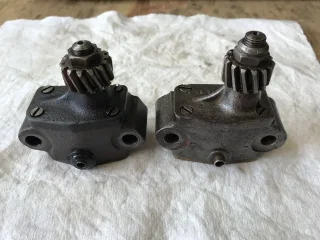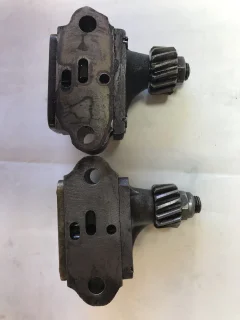NickZ
VIP MEMBER
- Joined
- Oct 31, 2018
- Messages
- 508
I have the timing cover off my 71 Roadster in order to adjust the camshaft chain. The bike has just over 23,000 miles on it. While I'm in there I'll install new seals on camshaft & crankshaft and oil pump.
I do have an issue with oil draining from tank to sump when the bike is idle for several days. I have the oil pump out and measured its end float to be 0.0015". I compare that to a spare pump which measured 0.0005" end float.
It would be convenient for me to just install the spare pump to get the bike back on the road and refurbish the original pump later. But I am a little concerned about putting an unknown pump in without assuring myself that it is functional. I picked this spare up with a bunch of parts I bought and do not know much about its history. I think it came from a 1973 850 engine. Other items that came with that bunch of parts have had issues. Is there a way to bench test an oil pump to be sure it is functional?
I do have an issue with oil draining from tank to sump when the bike is idle for several days. I have the oil pump out and measured its end float to be 0.0015". I compare that to a spare pump which measured 0.0005" end float.
It would be convenient for me to just install the spare pump to get the bike back on the road and refurbish the original pump later. But I am a little concerned about putting an unknown pump in without assuring myself that it is functional. I picked this spare up with a bunch of parts I bought and do not know much about its history. I think it came from a 1973 850 engine. Other items that came with that bunch of parts have had issues. Is there a way to bench test an oil pump to be sure it is functional?



